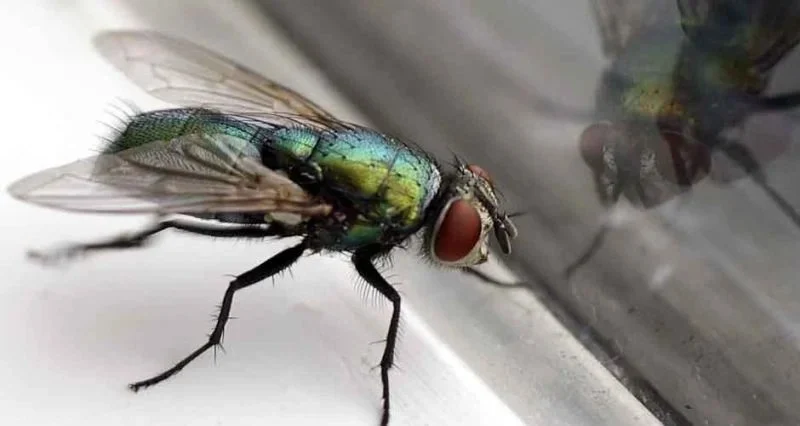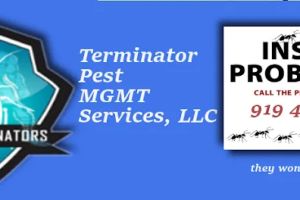
- Understanding the Problem of Flies Indoors
- Why Flies Multiply So Quickly Indoors
- Preventive Measures to Stop Flies from Multiplying
- Effective Fly Control Methods for Indoor Environments
- Keeping Your Home Fly-Free Year-Round
1. Understanding the Problem of Flies Indoors
Flies are not just annoying, but they can also carry diseases, making them a health concern in your home. When flies multiply indoors, they can quickly become an infestation, spreading bacteria and contaminating food. Understanding why flies are attracted to your home and how they reproduce will help you take effective steps to prevent them from taking over your living space.
1.1. Common Types of Flies Found Indoors
There are several types of flies that commonly infest homes, including house flies, fruit flies, and drain flies. Each type has specific breeding grounds and preferences, but they all share one thing in common: the ability to reproduce rapidly in warm, damp environments. House flies, for example, are attracted to food scraps, garbage, and organic waste, while fruit flies thrive around rotting fruits and vegetables.

Terminator Pest Mangement Services, LLC
ClaytonJohnston CountyNorth Carolina
29 Redwood Ct, Clayton, NC 27520, USA
1.2. The Dangers of Fly Infestations
Flies are not just a nuisance; they can also be harmful. As they move from trash to food, they can transfer bacteria, such as E. coli and Salmonella, which can cause foodborne illnesses. Understanding the importance of preventing flies from multiplying indoors is essential to maintaining a clean, healthy living environment.
2. Why Flies Multiply So Quickly Indoors
Flies are known for their rapid reproduction. A single female housefly can lay up to 500 eggs in her lifetime, with each batch hatching into larvae (maggots) within hours. These maggots feed on decaying organic matter, and in just a few days, they mature into adult flies capable of mating and laying more eggs. The cycle continues, and the fly population can quickly spiral out of control.
2.1. Ideal Breeding Conditions for Flies
Flies thrive in environments where there is easy access to food and water. Kitchens, garbage cans, and even pet food bowls can become hotspots for fly breeding if not properly cleaned. Wet areas such as drains or clogged pipes also serve as perfect breeding grounds, particularly for drain flies. Flies are drawn to these areas because they provide the warmth and moisture needed for larvae to thrive.
2.2. How Fast Do Flies Reproduce?
The speed at which flies reproduce is one of the primary reasons they are so difficult to control. Within just a few days, flies can go from egg to adult, which means that a small problem can quickly turn into a full-blown infestation. Understanding the life cycle of flies can help you act quickly before the problem escalates.
3. Preventive Measures to Stop Flies from Multiplying
The best way to stop flies from multiplying indoors is through prevention. By making small changes to your home and cleaning habits, you can significantly reduce the chances of attracting flies in the first place.
3.1. Proper Waste Management
Flies are attracted to garbage, especially when food scraps are involved. To prevent flies from multiplying, it’s important to keep trash bins tightly sealed and empty them regularly. Don’t leave food waste out overnight, and consider using a compost bin that is securely covered.
3.2. Cleaning and Sanitizing
Regular cleaning is essential to keep flies away. Clean up food crumbs, spills, and other organic waste promptly. Wipe down kitchen surfaces and keep appliances, like the refrigerator and stove, free of food particles. Pay attention to areas like under the sink or around drains where food debris can accumulate unnoticed.
3.3. Sealing Entry Points
Flies can enter your home through even the smallest cracks or openings. To prevent them from getting inside, seal any gaps in windows, doors, or walls. Make sure that screens are intact and close tightly to prevent flies from slipping through.
3.4. Storing Food Properly
Flies are attracted to exposed food, especially in warm, moist environments. To avoid attracting flies, store food in airtight containers, refrigerate perishable items promptly, and cover food while preparing or serving meals. This not only helps prevent flies but also keeps your food fresh for longer.
4. Effective Fly Control Methods for Indoor Environments
If flies have already started to invade your home, there are several effective methods for controlling them. From natural repellents to more advanced fly traps, here are some options to consider:
4.1. Fly Traps and Baits
Fly traps are a great way to capture and control indoor fly populations. You can purchase pre-made traps or make your own using simple ingredients like vinegar, sugar, or honey to attract flies. These traps use a combination of attractants and sticky surfaces to trap flies and prevent them from multiplying further.
4.2. Natural Repellents
If you prefer a more natural approach, there are several repellents you can use to keep flies at bay. Essential oils such as eucalyptus, lavender, and citronella are known to repel flies. You can diffuse these oils or make your own fly-repellent spray by mixing them with water and spraying it around doors, windows, and areas where flies are a problem.
4.3. Insecticides
In cases of severe fly infestations, insecticides can be an effective solution. Choose an insecticide that is safe for indoor use and follow the manufacturer’s instructions carefully. However, keep in mind that insecticides should be used sparingly and only when necessary, as they can pose a risk to pets and children.
5. Keeping Your Home Fly-Free Year-Round
Flies can be a persistent problem, but with the right strategies, you can keep your home fly-free throughout the year. By combining preventive measures with effective fly control methods, you can reduce the risk of fly infestations and enjoy a cleaner, healthier living environment.
5.1. Regular Home Inspections
To keep flies at bay, make regular inspections part of your cleaning routine. Check windows, doors, and other entry points for potential gaps or openings. Keep an eye out for signs of fly activity, such as maggots or larvae, which can indicate an active infestation.
5.2. Seasonal Maintenance
As the seasons change, so do the conditions for fly reproduction. In the warmer months, flies are more active, so extra precautions may be necessary. However, even in the winter, it’s important to keep up with cleaning and waste management to avoid attracting flies into your home.
If you're looking for the best fly control products, visit PestControlHub for effective solutions to keep your home fly-free. From traps to repellents, we offer a wide range of products to help you manage and prevent fly infestations.








 Wildlife Resolutions4.0 (443 reviews)
Wildlife Resolutions4.0 (443 reviews) Pest Marshals of Toledo5.0 (2 reviews)
Pest Marshals of Toledo5.0 (2 reviews) LS Rodent Proofing & Pest Control Service5.0 (4 reviews)
LS Rodent Proofing & Pest Control Service5.0 (4 reviews) Best Termite & Pest Control4.0 (16 reviews)
Best Termite & Pest Control4.0 (16 reviews) Varment Guard Wildlife Services5.0 (28 reviews)
Varment Guard Wildlife Services5.0 (28 reviews) Pestban Inc4.0 (394 reviews)
Pestban Inc4.0 (394 reviews) How to Use Monitors to Detect Pest Entry: A Comprehensive Guide
How to Use Monitors to Detect Pest Entry: A Comprehensive Guide How to Predict Which Pests Will Invade Next – Smart Pest Forecasting for the U.S.
How to Predict Which Pests Will Invade Next – Smart Pest Forecasting for the U.S. How to Conduct a Pest Risk Assessment at Home – Expert Guide
How to Conduct a Pest Risk Assessment at Home – Expert Guide How to Block Pest Entry Around Deck Joists: Effective Solutions
How to Block Pest Entry Around Deck Joists: Effective Solutions How to Safely Use Fumigation Methods: A Comprehensive Guide for Homeowners
How to Safely Use Fumigation Methods: A Comprehensive Guide for Homeowners Why Pests Are More Active After Rain: Understanding the Link Between Weather and Pest Behavior
Why Pests Are More Active After Rain: Understanding the Link Between Weather and Pest Behavior